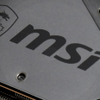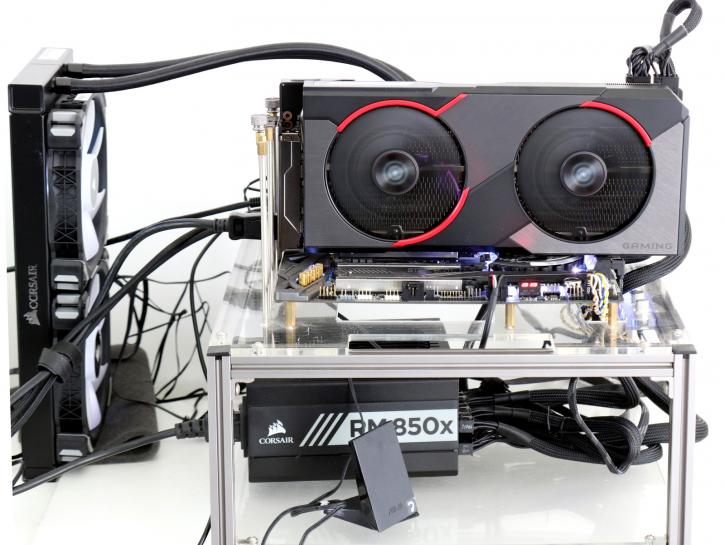Final words and conclusion
.final words
As stated in the reference reviews already, NAVI sits at the Vega performance level. So the improved architecture is sound, and pretty fast. The realm AMD is sitting in performance-wise with the RX 5700 series is the models 2060 and 2070 with exceptions here and there. Then there is, of course, the discussion on how relevant you find hardware-accelerated Raytracing and Tensor support. Most of you don't care at this time, but much like anything in the tech industry, everything will evolve, and AMD positioned itself to be smacked down in the middle of that next step in the gaming evolution. By not offering at least RT support, their trump card really needs to be pricing and proper shader-based gaming performance.
.performance
XT or non-XT, both Radeon RX 5700 cards show good, in fact, super strength at Quad HD resolutions in that 2560x1440 realm of resolutions. Games like Battlefield V will make you aim, shoot and smile. As always comparing apples and oranges, the performance results vary here and there as each architecture offers advantages and disadvantaged in certain game render workloads. Battlefield V and Metro: Exodus skyrockets for NAVI. So you'll be seeing wins and losses in perf compared to team green. AMD has got the right amount of graphics memory applied, the right type this time as well as 8GB GDDR6 graphics memory running over that 256-bit bus at 14 Gbps, is done right. The new architecture does show strength and IPC increase, especially seen from Polaris the results are pretty amazing. However, that statement has no merit, as they are not priced in the same region. Realistically the XT card makes good sense in the Wide Quad HD space (monitor resolution of 2560x1440) and can even properly handle games at 3840x2160 (Ultra HD). Result vary per game title though.
.pricing
The 5700 remains somewhat on the high side of the pricing, but at 399 USD / € 425,- for this premium cooled and designed product you receive one of the better coolers we've tested to date when it comes to looks and acoustics. However, the conundrum for MSI is simple, the XT reference card is priced in the same ballpark. And in the end, my best guess is that people will go for the XT just based on performance. We also need to weigh in another factor, it is the MSRP, and if the volume availability is low, etailers will drive up prices based on demand to make a quick buck. But we'll have to wait and see how that pans out.
.cooling & noise levels
The card sits at roughly 66 Degrees C while gaming, and that is totally fine. The fan will be from ramping up at a strong temperature increase, but it ramps down and settles in a very silent fashion at low RPM during gameplay. We've have heard minuscule bits of coil whine at best. But I do want to note that any graphics card at a high-enough FPS will make some coil-whine.
.energy
The power draw during gaming for this card we measure to be just around 165 Watts. That number varies a bit per game title, workload, resolution and even refresh rate of course. It's a substantial wattage, especially compared to the competition's products in the same performance bracket.
.conclusion
The Gaming X edition of the 5700 is an interesting product, however, feels less attractive compared to the MSI 5700 XT Gaming X. MSI is sticking very close to the default power consumption target and with an extra 25 Mhz on the game clock, really you are looking at a reference performing product. It throttles down even lower once that power limiter on board power kicks in. In fact, we even measured some negative scaling. That, however, is an overall 1% deviation and can be noted down as an offset within the reference baseline. The good news is that the card remains silent and cool. The factory tweak however as just said doesn't do much at all. Admittedly MSI could have pushed that TDP power envelope, that increases performance like maybe 2% so perhaps at best (that's an extra 1 FPS at a 50 FPS average) MSI is making the right call here. On noise we have to say that when the GPU starts to heat up, the fans ramps up a bit, you can hear it but after 150 to 30 seconds it slowly settles at a lower and silent RPM level. It is really silent during gameplay. NAVI cards behave extremely well in the normalized 2560x1440 range of resolutions, but with some titles, perf can cave in where at others it takes a lead. Whether or not this performance is justified at the recommended retail prices, I don't know and we'll have to wait and see how that pans out. GDDR6 then, the card comes with a proper 8GB of GDDR6 memory. Really, that exactly right and what these products it needs. I will say this once again, the factory tweaks on NAVI10 do not yield heaps of extra performance. Manual tweaking wise open up that power limiter, give it a bit of a bump in frequency and you'll easily gain extra perf with a manual tweak in a 1750~1800 MHz domain but at the cost of significant increasing power consumption. The memory can be tweaked, but again is limited by AMD to a max value of 930 MHz (= 14880 MHz effective data-rate). These cards behave well in the normalized 2560x1440 range of resolutions, but with some titles, perf can cave in where at others it takes a lead. Whether or not this performance is justified at the recommended retail prices, I don't know is only something you can decide, yes you the consumer. The card comes with a proper 8GB of GDDR6 memory. Really, that's exactly right and what these products need. The aesthetic design is very nice, the noise levels good and the performance more or less reference. I was far more excited about the XT Gaming X then I am about this non-XT model, then again even with that meaningless factory tweak we can recommend the product. However, it would be good to see the AIB Radeon RX 5700 cards priced under the actual reference XT.
- Sign up to receive a notification when we publish a new article.
- Or go back to Guru3D's front page



